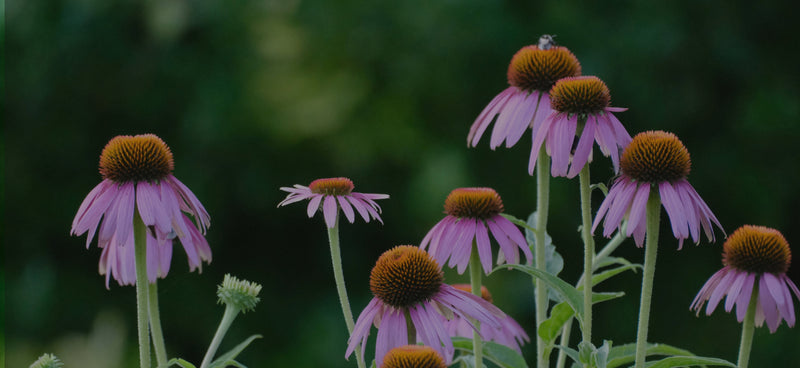About Category Tree
Rich color and full blooms in nearly any climate.
Native wildflowers are a gardener’s best friend! A great place to start with native gardening is one of our favorite North American natives, Black-eyed Susan.
These cheerful, bright gold flowers with their dark centers are one of our favorite perennials (many gardeners grow them as a biennial or a short-lived perennial).Blooming from mid-summer into early fall, Black-eyed Susan is a very long-season flower that is bold and brilliant in the garden. This hardy plant is very easy to grow and will thrive in full sun in sandy or clay soils with average moisture. It is very heat and drought tolerant. In fact, as the weather starts to dry out and turn hot in late summer, this is one of the few flowers that will keep right on blooming while other flowers have stopped.
Hummingbirds, bees, butterflies, and other beneficial insects are all attracted to its nectar and pollen. Many birds, especially seed-eating finches and sparrows, eat the seeds in fall and winter when other food is scarce. Deer also tend to leave these plants alone, so Black-eyed Susans can do very well in areas with high deer pressure.In summary, Black-eyed Susan has a winning combination of long season bloom, toughness, and wildlife value. Deer- and drought-resistant, this plant is one of the easiest natives for gardeners of any experience level to grow and enjoy.
These cheerful, bright gold flowers with their dark centers are one of our favorite perennials (many gardeners grow them as a biennial or a short-lived perennial).Blooming from mid-summer into early fall, Black-eyed Susan is a very long-season flower that is bold and brilliant in the garden. This hardy plant is very easy to grow and will thrive in full sun in sandy or clay soils with average moisture. It is very heat and drought tolerant. In fact, as the weather starts to dry out and turn hot in late summer, this is one of the few flowers that will keep right on blooming while other flowers have stopped.
Hummingbirds, bees, butterflies, and other beneficial insects are all attracted to its nectar and pollen. Many birds, especially seed-eating finches and sparrows, eat the seeds in fall and winter when other food is scarce. Deer also tend to leave these plants alone, so Black-eyed Susans can do very well in areas with high deer pressure.In summary, Black-eyed Susan has a winning combination of long season bloom, toughness, and wildlife value. Deer- and drought-resistant, this plant is one of the easiest natives for gardeners of any experience level to grow and enjoy.

